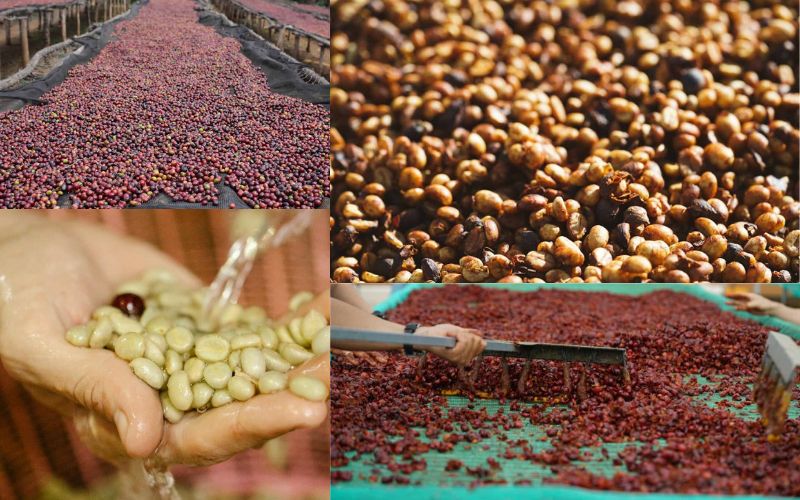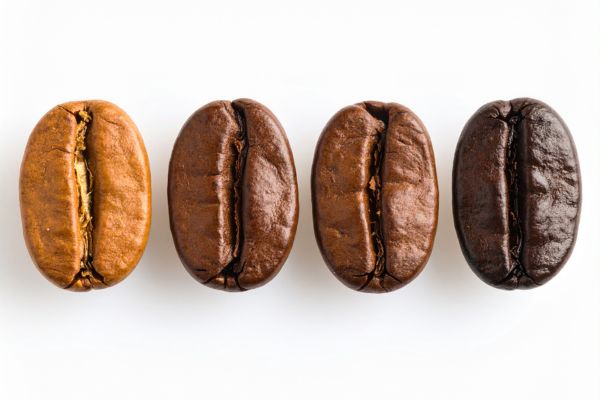
A Guide to Coffee Processing Methods
Washed, Natural, or Honey? This guide explores the most common coffee processing methods and explains how these techniques profoundly impact the final taste and aroma of your coffee.
What is Coffee Processing?
Coffee processing is the series of steps required to get the coffee from a freshly picked fruit (called a cherry) to a dried, stable green bean that is ready for roasting. The method used to process the coffee is one of the most significant factors in determining its final flavor.
Inside each coffee cherry are typically two coffee beans. The goal of processing is to remove the outer layers of skin, pulp, mucilage, and parchment to get to the bean, and then to dry the bean to the ideal moisture level of around 11%.
The three most common processing methods are Washed, Natural, and Honey. Each one imparts a unique character to the coffee.
1. Washed (or Wet) Process
The washed process is all about creating a clean, bright, and transparent cup of coffee. It's the most common method used in the specialty coffee industry because it allows the inherent flavors of the coffee's origin, variety, and terroir to shine through without any influence from the fruit.
The Process:
- The coffee cherries are put through a de-pulping machine that removes the outer skin and most of the fruity pulp.
- The beans, still coated in a sticky layer of mucilage, are placed in fermentation tanks filled with water for 12-48 hours. The fermentation breaks down this sticky layer.
- The beans are washed thoroughly to remove any remaining fruit.
- The clean beans are then dried on patios or raised beds until they reach the target moisture content.
- Flavor Profile: High, clean acidity; a light, elegant body; and clear, crisp flavor notes (often floral or citrusy).
2. Natural (or Dry) Process
The natural process is the oldest and most traditional method of processing coffee. It's a much more rustic technique that can produce incredibly unique and intensely fruity coffees.
The Process:
- The freshly picked coffee cherries are laid out in their entirety—skin, pulp, and all—on large patios or raised beds in the sun.
- They are left to dry for several weeks and are raked and turned regularly to ensure even drying and prevent mold.
- During this time, the bean inside absorbs many of the sugary, fruity flavors from the surrounding cherry.
- Once the cherries are fully dried, the hardened fruit and parchment layers are mechanically removed.
- Flavor Profile: Low, wine-like acidity; a heavy, syrupy body; and intense, fruit-forward flavors (think strawberry, blueberry, or tropical fruit). Natural processed coffees can be a "love it or hate it" experience for some.
3. Honey Process
The honey process (so-named for the sticky, honey-like feel of the beans during drying) is a hybrid method that sits somewhere between the washed and natural processes. It's a complex, skill-intensive method that aims to create a sweet, balanced cup.
The Process:
- The skin and pulp of the coffee cherry are removed, but the sticky mucilage layer is intentionally left on the bean.
- The beans are then moved directly to drying beds without being fermented in water. The amount of mucilage left on the bean can be controlled, leading to different "honey" levels (white, yellow, red, and black honey).
- The more mucilage that is left on, the more the final cup will resemble a natural processed coffee.
- Flavor Profile: A balance between the other two methods. It typically has a sweet, fruity character, a syrupy body, and a more muted, rounded acidity than a washed coffee.
By understanding these processing methods, you can better predict the flavor profile of a coffee before you even buy it and choose a bean that perfectly matches your preferences.


